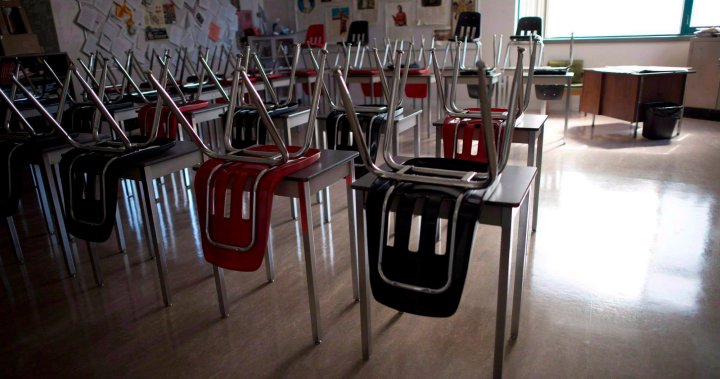Amid calls from teachers and unions that represent them for more reasonable class sizes across Canada, a new study is suggesting “smaller class sizes” may not give students a boost after all.
The study found minimizing the number of students in classrooms did not lead to better grades, and suggests it may even decrease their odds at achieving the best results. The study looked at data from Macau, China and Japan, of 2,700 “disadvantaged” secondary school students with class sizes of 15 or fewer pupils to more than 50.
It notes the quantity of teachers didn’t increase the odds for students from what they deemed the poorest backgrounds. Instead, students showing resilience and improvement was linked to the “quality” of teachers, which the study’s authors defined as those with high discipline standards and who use their expertise to improve learning.
The study also notes the negative impact misbehaviour can have in general on students.
While the study suggests small class sizes aren’t a benefit, educators say what’s needed to circumvent the issue of big classes is more supports for those teaching, so that assistance can be passed on to benefit students.
Simon Fraser University biological science senior lecturer Megan Barker, whose expertise includes teaching in large classrooms and active learning, told Global News she has taught classes as big as 500. Regardless of class size, she says having the targeted support in place for students is “crucial.”
Breaking news from Canada and around the world
sent to your email, as it happens.
“I could not teach in an active, evidence-based way without having the support of either TAs (teaching assistants) or, occasionally, other instructors to come in and help make it a useful, meaningful classroom where students can learn and thrive,” she said.
She added it’s more difficult to connect with students when you have a large class, so it’s about management and helping them where possible.
In Saskatchewan, class size is becoming an important element of ongoing negotiations with the government over a new collective agreement.
Saskatchewan Teachers Federation president Samantha Becotte has said that funding to address classroom size and complexity is a priority in the negotiations, with a call for funding to be accompanied by a long-term commitment the funds would be directed to supports in the classroom.
The study notes it supports that the “quality of teachers, rather than the quantity, is the primary guarantee of students’ resilience.”
In other words, rather than shrink class sizes and add more teachers, ensure the teachers you have in place are properly supported so they can effectively do their jobs.
Becotte said students are already facing challenges and it’s why more supports are needed.
“We have more complex classrooms, which means that not only do we have more students in our classes, those students have more needs than they did in the past, and we have fewer and fewer professional supports in order to support those needs,” she said.
However, when it comes to the study, University of Alberta educational policy studies professor Darryl Hunter says to keep in mind that findings from Macau and Japan cannot necessarily be replicated for Canadian classrooms because the “picture is a lot more complex on the ground.”
“I would suggest that the results, while important, are hard to generalize or translate into Ontario schools or schools in Cape Breton Island or schools in British Columbia,” he said. “Further research is needed from the comparability side.”
Hunter says when policymakers are considering budgets for education that class size should be just one of several educational factors to consider to ensure proper supports can be put in place for schools.
© 2024 Global News, a division of Corus Entertainment Inc.




